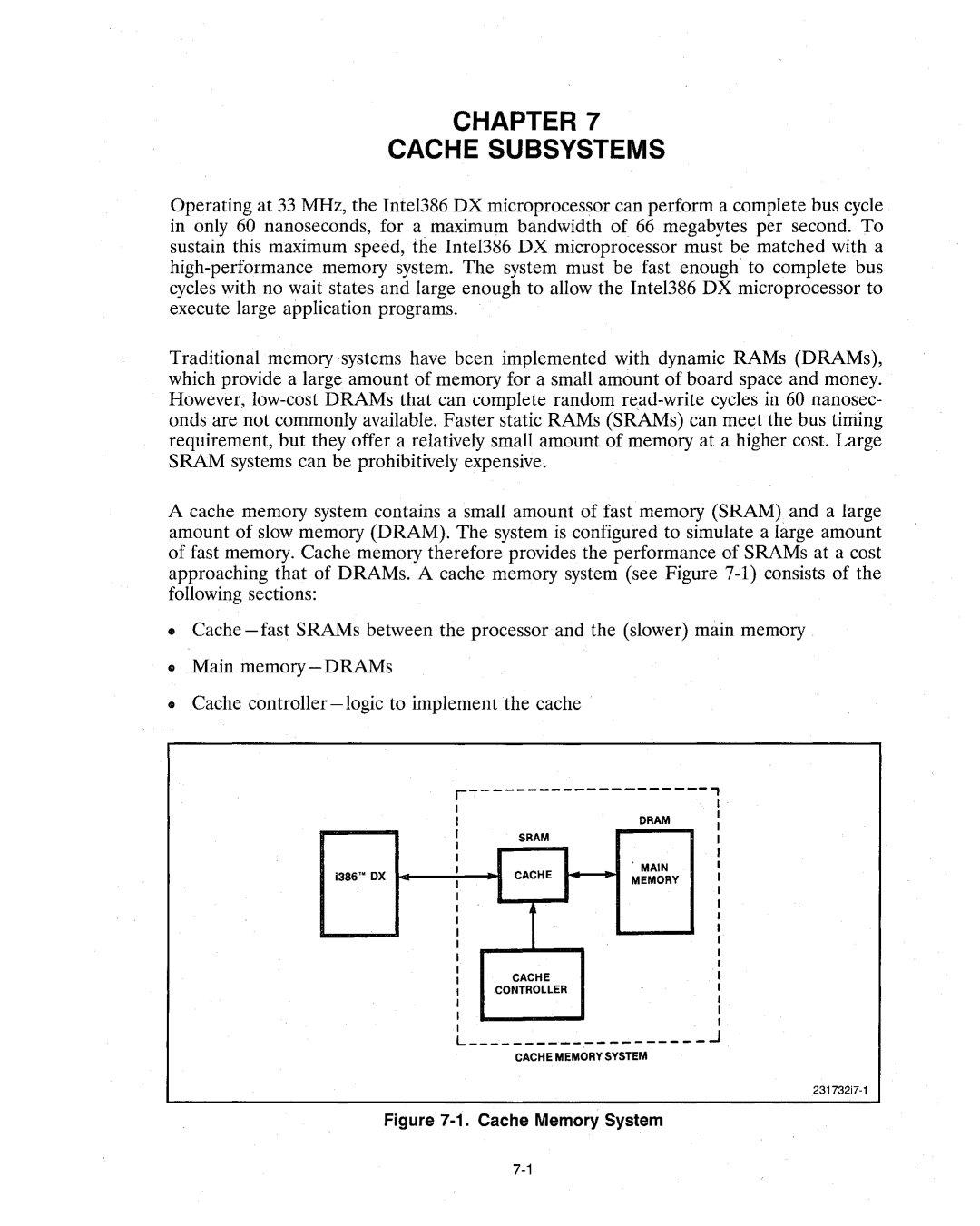
CHAPTER 7
CACHE SUBSYSTEMS
Operating at 33 MHz, the Inte1386 DX microprocessor can perform a complete bus cycle in only 60 nanoseconds, for a maximum bandwidth of 66 megabytes per second. To sustain this maximum speed, the Intel386 DX microprocessor must be matched with a
Traditional memory systems have been implemented with dynamic RAMs (DRAMs), which provide a large amount of memory for a small amount of board space and money. However,
A cache memory system contains a small amount of fast memory (SRAM) and a large amount of slow memory (DRAM). The system is configured to simulate a large amount of fast memory. Cache memory therefore provides the performance of SRAMs at a cost approaching that of DRAMs. A cache memory system (see Figure
..
.. Main
.. Cache controller
r | ||
| DRAM | |
| SRAM | |
1386'· OX | . MAIN | |
CACHE 1- MEMORY | ||
| ||
| t | |
| CACHE | |
| CONTROLLER |
L ____________________
CACH E MEMORY SYSTEM
